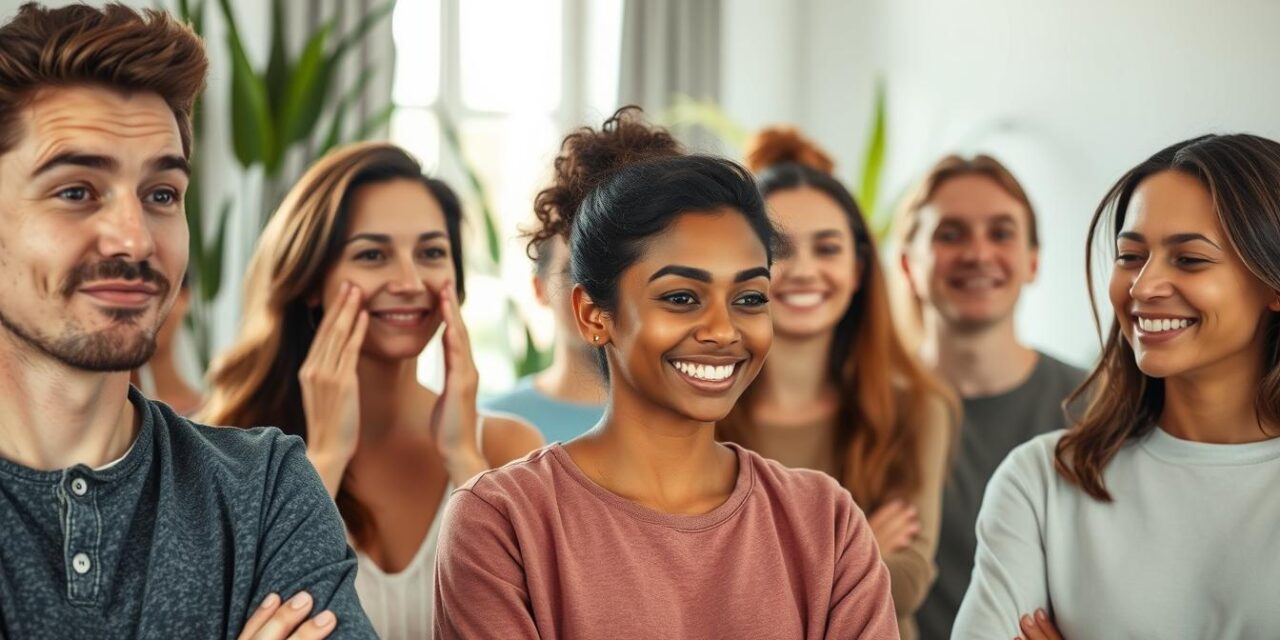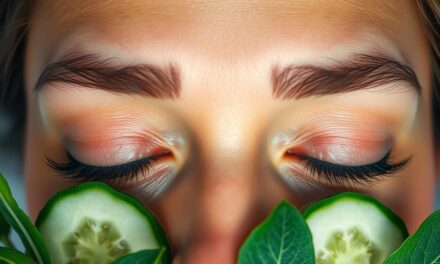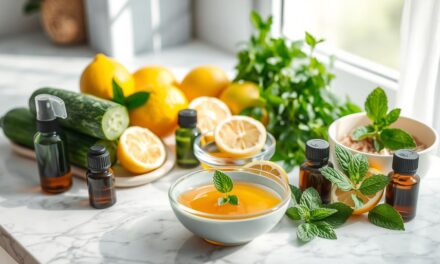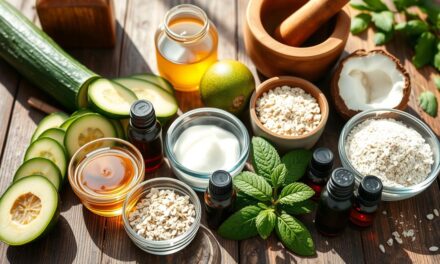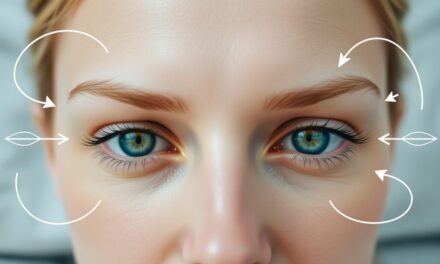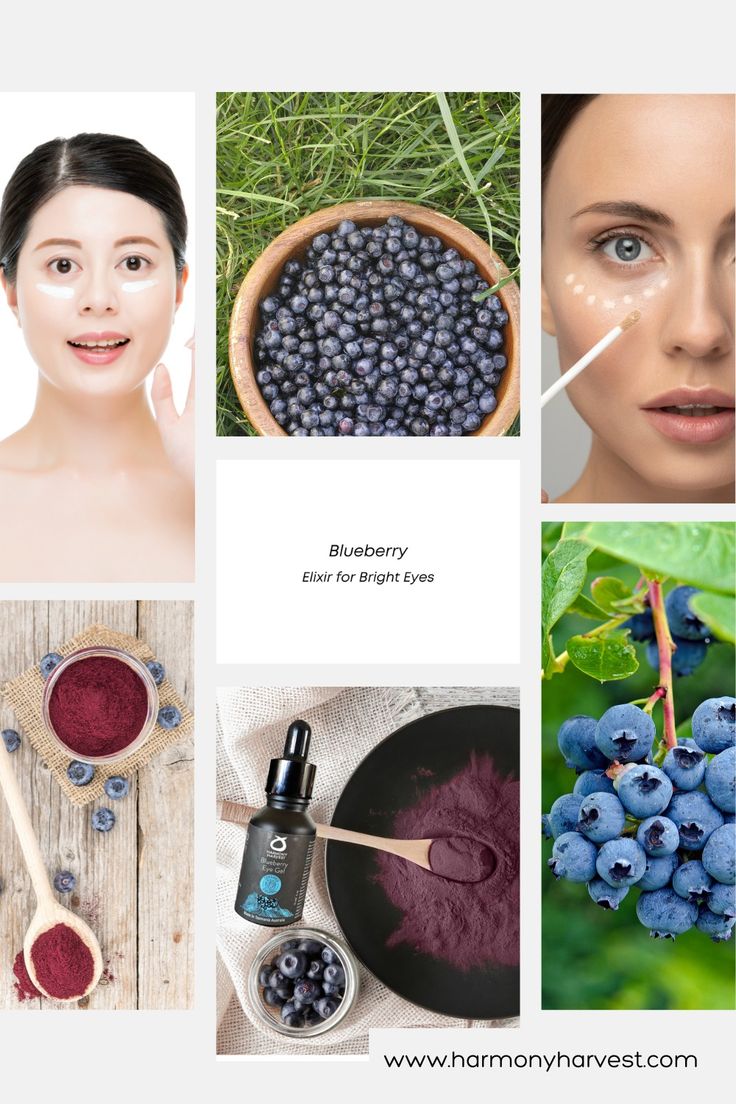Are you looking for a natural way to make your face look younger? Face exercise is the answer. It’s a trend that’s becoming popular in Australia. By working your facial muscles, you can get rid of wrinkles and shape your jawline.
This guide will show you how face exercise works and its many benefits. You’ll see how it can improve blood flow and make your muscles stronger. It’s a simple yet powerful way to change how you look.
Key Takeaways
- Face exercise is a natural, non-invasive way to tone facial muscles and achieve a more youthful appearance.
- Regular face exercise can help reduce the appearance of wrinkles, improve skin tone, and enhance facial definition.
- Understanding the anatomy of facial muscles and how they change with age is key to developing an effective face exercise routine.
- Incorporating face exercise into your daily routine can provide a range of benefits, including improved circulation and reduced signs of ageing.
- Mastering proper technique and breathing practices is crucial for maximizing the results of your face exercise routine.
Understanding Facial Muscle Anatomy and Ageing Process
To get the most from facial muscle training, knowing about facial muscle anatomy and ageing is key. The face has over 50 muscles, each important for our looks and health. These muscles help us express ourselves and keep our skin looking good.
Key Facial Muscle Groups
The face has several main muscle groups. These include the forehead, eye, cheek, lip, and jaw muscles. Together, they help us smile, frown, squint, and more.
How Ageing Affects Facial Muscles
As we get older, our facial muscles change. This can cause our skin to sag and wrinkles to form. Our muscles also weaken, making our face look less defined.
The Science Behind Facial Exercise
Studies show that facial muscle training can fight ageing. It makes our face look younger by strengthening muscles. This routine can add volume and tone to our skin.
| Facial Muscle Group | Effect of Ageing | Benefits of Facial Exercise |
|---|---|---|
| Forehead muscles (frontalis) | Loss of elevation and furrow smoothing | Improved brow lift and reduced forehead wrinkles |
| Eye muscles (orbicularis oculi) | Sagging and hooding of eyelids | Tightened eyelids and reduced crow’s feet |
| Cheek muscles (zygomatic major and minor) | Descent and flattening of cheeks | Lifted and more defined cheekbones |
| Lip muscles (orbicularis oris) | Thinning and loss of volume in lips | Plumper, more youthful-looking lips |
| Jaw muscles (masseter and platysma) | Sagging and jowl formation | Tightened jawline and reduced neck bands |
Knowing how facial muscle training works against ageing helps us make a good anti-ageing facial routine. This routine can give us lasting beauty.
Benefits of Regular Face Exercise
Adding face toning exercises to your daily routine can make you look younger and more radiant. These exercises work on the facial muscles, boost blood flow, and increase collagen. This leads to better skin health and more elasticity.
Face exercises help improve muscle tone and definition. They make your face look more sculpted and contoured. This reduces the look of sagging skin and fine lines, giving you a more lifted and youthful look.
- Improved muscle tone and definition
- Reduced appearance of wrinkles and fine lines
- Enhanced blood circulation and collagen production
- A more youthful and radiant complexion
Face exercises also boost collagen production, which keeps your skin elastic and firm. As we age, collagen levels drop, causing wrinkles and less supple skin. Regular face toning exercises can slow down this ageing process, preventing wrinkles and keeping your skin looking young.
“Regular face exercises can be a game-changer in your anti-ageing skincare regimen. By targeting the facial muscles, you can achieve a more sculpted and youthful appearance that radiates confidence.”
Face exercises also strengthen and flex your facial muscles. This can make your facial expressions better, improve your posture, and balance your facial muscles. This leads to a more vibrant and lively look.
Adding face toning exercises to your daily routine is a natural way to fight ageing signs like wrinkles and sagging skin. Just a few minutes each day can bring many benefits, making you feel and look your best.
Essential Face Exercise Techniques for Beginners
Discover the power of face gymnastics and facial yoga with our beginner guide. These techniques help tone your face, reduce ageing signs, and keep you looking young and radiant.
Proper Warm-up Techniques
Start by warming up your facial muscles before doing face exercises. Gently stretch your eyes, forehead, and cheeks. Open and close your eyes, raise and lower your eyebrows, and massage your temples lightly. This warm-up boosts blood flow and gets your face ready for exercises.
Basic Facial Movements
Learning the basics is crucial for face gymnastics. Start with simple actions like puckering your lips, smiling, and frowning. Do each movement several times, focusing on controlled muscle contractions. As you get better, try more complex actions like scrunching your nose or raising your eyebrows.
Breathing and Relaxation Methods
Good breathing is key for safe and effective face exercises. Breathe in deeply through your nose, letting your belly expand, and breathe out slowly through your lips. This breathing not only oxygenates your muscles but also keeps you relaxed and focused.
Listen to your body, start slow, and gradually increase exercise intensity. With regular practice and a gentle approach, you’ll see improvements in your facial appearance.
| Warm-up Exercises | Basic Facial Movements | Breathing Techniques |
|---|---|---|
|
|
|
“Facial exercises, when done correctly, can help tone and strengthen the muscles in the face, leading to a more youthful and lifted appearance.” – Dr. Sarah Smith, Dermatologist
Creating Your Daily Facial Yoga Routine
Starting a regular facial yoga practice is essential for anti-aging benefits. Spend just a few minutes each day on facial muscle exercises. This can make your face look lifted, toned, and younger. Here’s how to create your own anti-aging facial routine.
Start with a Manageable Timeframe
Start with 5-10 minutes of facial yoga daily. This short but regular practice will strengthen your facial muscles. As you get used to it, you can increase the time to 15-20 minutes for a deeper workout.
Focus on Key Facial Zones
- Forehead and brow area
- Cheeks and nasolabial folds
- Jawline and neck
- Eyes and orbital region
Focus on these main areas for the best results. This will help lift and tone your face effectively.
Develop a Routine that Fits Your Lifestyle
Make your facial exercises part of your skincare or morning/evening routines. This way, they become a natural part of your daily care. You can even do them while commuting or relaxing at home.
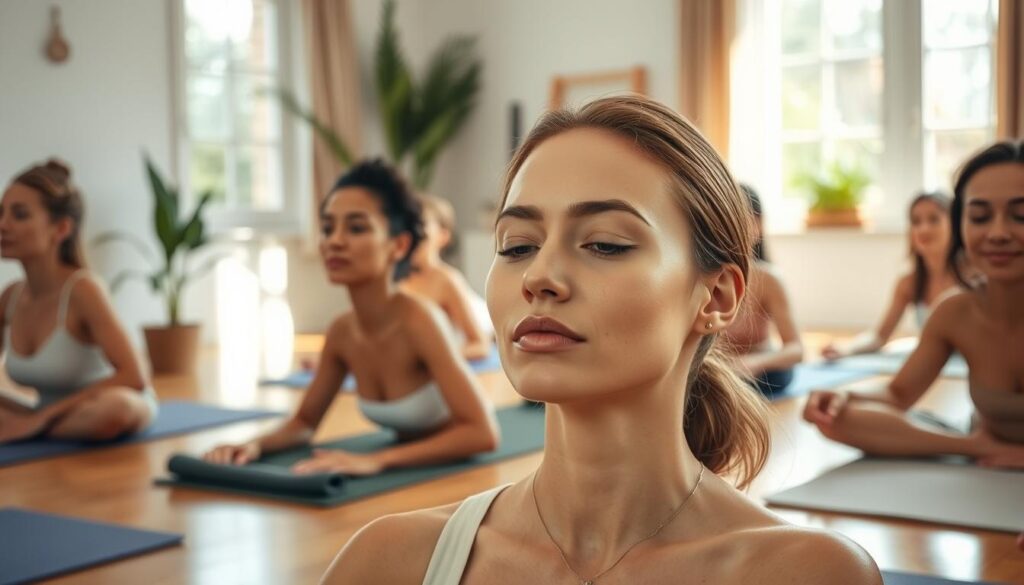
“Consistency is key when it comes to facial yoga. Even just 5-10 minutes a day can make a noticeable difference in facial contours and skin health over time.”
Start small and gradually build up your facial yoga routine. With time and effort, you’ll see a youthful, radiant complexion.
Target Areas: Exercises for Different Facial Concerns
Getting a youthful look doesn’t need to cost a lot. You can use your facial muscles with facelift workout and non-surgical facelift exercises. Knowing what each facial area needs helps you focus on the right exercises. This way, you can get a natural, lasting change.
Jawline and Neck Exercises
As we get older, the jawline and neck can sag. This makes us look older. Try the “Neck Lift” and “Chin Tuck” exercises. They tone and tighten the muscles, giving you a younger jawline.
- Neck Lift: Tilt your head back and look up. Pull your chin towards your chest, stretching your neck. Hold for 5-10 seconds, then release.
- Chin Tuck: Stand or sit up straight. Slowly tuck your chin towards your chest. Hold for a few seconds, then release.
Cheek and Nasolabial Fold Workouts
Sagging cheeks and deep nasolabial folds make us look older. The “Cheek Lift” and “Lip Pull” exercises can help. They tighten and tone these areas, making you look younger.
- Cheek Lift: Smile wide, engaging your cheek muscles. Pull your cheeks up towards your eyes with your fingers. Hold for 5-10 seconds before releasing.
- Lip Pull: Purse your lips, then pull the corners of your mouth outwards with your fingers. Hold for a few seconds, then release.
Forehead and Eye Area Techniques
The skin and muscles around the eyes and forehead show aging signs fast. The “Eyebrow Lift” and “Forehead Smoothing” exercises target these areas. They help you look refreshed and youthful.
- Eyebrow Lift: Raise your eyebrows as high as you can. Hold for a few seconds, then release.
- Forehead Smoothing: Smooth your forehead with your fingertips, starting from the center. Repeat several times.
Adding these facelift workout and non-surgical facelift exercises to your daily routine can be powerful. It lets you use your facial muscles to look younger naturally, without invasive treatments.
Combining Face Exercise with Skincare Practices
Getting a youthful, glowing face needs a complete plan. This plan should mix anti-aging facial routine and natural face lifting techniques. By combining facial exercises with a good skincare routine, you can get even better results.
Start by cleaning your face with a gentle, nourishing cleanser. This removes dirt, letting your facial muscles work better. Then, use a hydrating toner to balance your skin’s pH and get ready for more steps.
Facial Massage for Improved Circulation
Add a few minutes of facial massage to your routine. Focus on the muscles you’re working with your exercises. This boosts blood flow, bringing nutrients and helping cells renew.
Massage your skin in upward and outward motions. Pay extra attention to your cheeks, jawline, and temples.
Moisturising for Skin Elasticity
After exercising your face, apply a nourishing moisturiser. Choose one with anti-aging ingredients like retinol, vitamin C, or hyaluronic acid. These help keep your skin elastic and firm.
Massage the moisturiser into your skin. Make sure it goes deep to nourish your facial muscles.
Sun Protection for Long-Lasting Results
Don’t forget to use a broad-spectrum sunscreen with high SPF before going outside. Sun can ruin the good work of your facial exercises. So, sun protection is key to your daily anti-aging facial routine.
By blending your anti-aging facial routine and natural face lifting techniques, you’ll get the most out of your facial exercises. You’ll have a youthful, radiant face to be proud of.
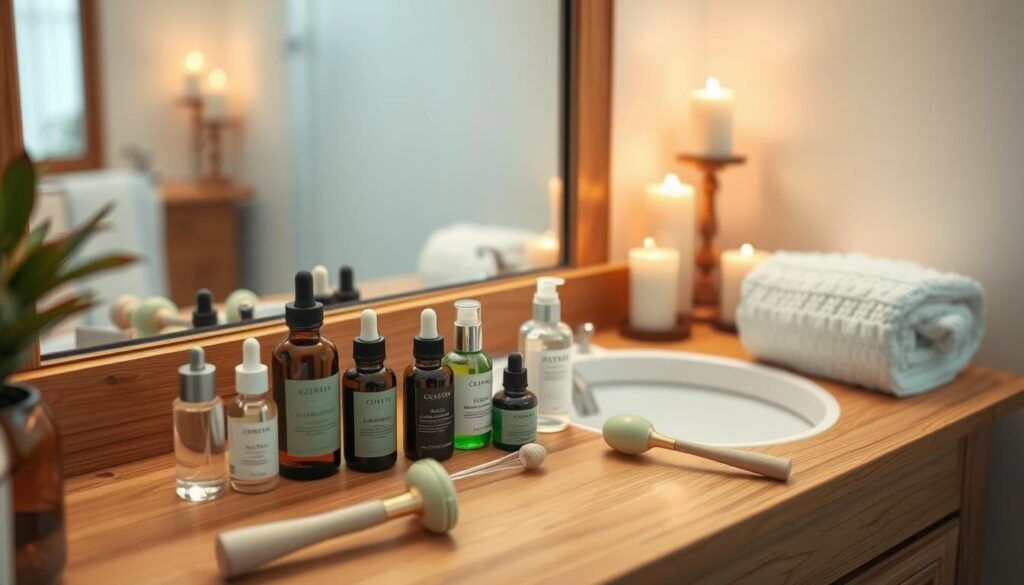
Common Mistakes to Avoid in Facial Muscle Training
Facial muscle training, or face gymnastics, can greatly improve your face and skin health. But, it’s vital to avoid common mistakes that can slow your progress or harm you. We’ll look at the main errors to avoid in your facial muscle training journey.
Incorrect Technique Prevention
Getting the technique right is key in facial muscle training. Wrong form can make your exercises less effective and even hurt your muscles. Always make sure you’re doing the movements right and targeting the right muscles. Look for a qualified instructor or online tutorials to guide you.
Overtraining Risks
While regular facial muscle training can be rewarding, don’t overdo it. Doing too much can tire out your muscles, cause irritation, and damage your face tissues. Make sure to balance your training with rest to let your muscles heal and grow. Pay attention to your body and adjust your routine to avoid overtraining.
Signs of Improper Exercise
- Discomfort or pain during or after exercises
- Increased redness, swelling, or inflammation in the facial area
- Visible muscle twitching or uncontrolled contractions
- Lack of visible progress or even worsening of facial concerns
If you notice any of these signs, stop the exercises right away and see a professional. A facial therapist or dermatologist can help figure out what’s wrong and guide you on safe, effective training.
By being aware of these common mistakes and taking steps to fix them, you can make sure your facial muscle training is safe and effective. Remember, being patient and consistent is crucial for the best results from your face gymnastics.
Natural Face Lifting Techniques and Tools
There are many natural ways to lift your face, besides facial exercises. These methods can make your face look tighter and younger. They also help your skin look healthier and more vibrant.
Facial rollers are very popular. They are made of jade or quartz and roll over your skin. This improves blood flow and helps get rid of puffiness and wrinkles.
Gua sha stones are another great tool. You use a flat stone to gently scrape your face. This boosts blood flow and relaxes muscles, making your face look more defined.
Facial cups are also useful. They create suction on your skin, pulling out toxins and improving blood flow. This helps tone your face and make it look more sculpted.
| Natural Face Lifting Technique | Key Benefits |
|---|---|
| Facial Rollers | Improves circulation, reduces puffiness, minimizes fine lines and wrinkles |
| Gua Sha | Defines the jawline, lifts the cheeks, alleviates puffiness around the eyes |
| Facial Cups | Draws out toxins, improves circulation, promotes lymphatic drainage, tones and sculpts facial features |
Adding these natural face lifting techniques and tools to your routine can enhance your facial exercises. You’ll get a more youthful and radiant look.
Advanced Face Exercise Methods and Variations
As you get better at facial muscle training, it’s time to try more advanced techniques. You can also make your routine more personal to get even better results. By using progressive training, adding face massage, and making your exercises fit your needs, you can improve your facial fitness even more.
Progressive Training Techniques
To keep challenging your facial muscles, slowly increase the intensity and time of your exercises. You could do more reps, hold poses longer, or use light weights or resistance bands. Always check how you’re doing and change your routine as needed to keep improving and looking younger.
Integration with Face Massage
Adding face massage to your exercises can make them even better. Use gentle massage before, during, or after your workouts to boost blood flow and relax muscles. Try different massage styles like lymphatic drainage or acupressure to focus on certain areas and make your routine more personal.
Customising Your Routine
As you become more skilled, make your routine fit your specific needs and goals. You might focus on certain areas, try new exercises, or change how often and long you work out. Be open to trying new things and adjust as your body and fitness level change.
